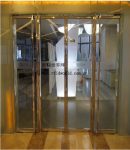
Application case of remote access control and attendance automatic identification system in enterprises
[ad_1]
The world’s leading logistics software development – Jilian Technology,Successful use of remote access control, attendance, personnel identification management systems, meeting check-in in conference rooms, and open authority control.26 short-distance swiping card access control points, 4 RFID long-distance swiping card automatic identification access control attendance points.

Points to pay attention to in remote access control attendance:
Long-distance access control: It is required that the card reading distance should not be too far. The best distance is 1-2 meters away from the door, and 0.5 meters away from the left and right (the card can be placed in the pocket or in the purse at will), and people just walk from a distance Read the card at a position about 1-2 meters in front of the door, unlock the door, and push the door to enter.If it is an automatic door, enter the door just when the door opens

Automatic recognition and automatic door opening when entering and leaving.And has the attendance function, multiple people can enter and exit at the same time without missing cards
Remote access control implementation requires a remote card reader
The omnidirectional range of the card reading is stable and has a clear boundary (it cannot be a phased pulse signal, and suddenly it can be read very far, causing the door to keep opening for no reason),
The reading range of the card is within 3 meters (it cannot be opened by people walking on the road outside or walking indoors);
The card is not affected by the human body and cannot be shielded by the human body (the card cannot be read if it is placed in an underwear bag or bag, or the card of the person behind cannot be read when many people are crowded in and out);
The conversion of the card angle has little effect on the card reading distance, and there is no dead angle in the card reading (it cannot be read only when you come in facing the door, and you cannot read the card and cannot open the door if you come from the side).
No metal bounce

Long-distance attendance: It is required that the long-distance card reader has a stable omnidirectional range of card reading, has a clear boundary, cannot have periodic pulse signals, and the reading range of the card is within 3 meters; the card is not affected by the human body, and cannot be shielded by the human body; multiple reading It has strong output ability, and can not miss the card reading when many people are crowded in and out; the change of the card angle has little effect on the card reading distance, and there is no dead angle for card reading. The card can be hung up, placed in the bag, in the inner pocket of the clothes, in the hand, or in the back pocket without being affected. Do not miss the record.
The reserved personnel tracking and positioning function can realize the correct judgment of personnel entry and exit, prohibit the passage of personnel without cards, alarm with camera capture, and security control. (Personnel tracking and positioning for access control management)
What’s more important is that the equipment is installed in the dark, and nothing can be seen from the outside, which does not affect the appearance, does not damage the design of the original building, and does not feel restrained to people.
At the same time, it can cooperate with vehicle entry and exit management, consumption management, meeting sign-in, etc. to meet the general needs of ordinary enterprises for a card to swipe the entire system.
The damage problem of the power and frequency of the card reader itself:
We all know that high frequency has a strong radiation hazard to the human body, and long-term work and life in a high-frequency radiation environment will seriously affect human health. Therefore, high-frequency and ultra-high-frequency card readers are generally used for non-living bodies such as logistics, transportation, and assets.
Relevant studies have shown that the pathogenic effect of electromagnetic waves increases with the increase of the vibration frequency of the magnetic field, and the frequency exceeds 100,000 Hz, which can cause potential threats to the human body. Working and living in this environment for a long time, the interference of electromagnetic waves, the original electric field of the molecules in the human body tissue will change, and the various biological molecules that make up the brain cells will be destroyed to a certain extent. Too many harmful metabolites such as peroxides are produced, and even the DNA codes of brain cells are disordered, and some non-physiological neurotransmitters are produced. If the human body is exposed to radiation doses exceeding safe standards for a long time, human cells will be killed or killed in a large area. —-“Hazards and Protection of Electromagnetic Waves”
Therefore, for applications such as access control, attendance and other personnel identification, low-frequency long-distance card readers are required. The low-frequency card reader has low power, low frequency and small coverage. It needs to pass the FCC certification and will not cause harmful interference to the human body and other equipment. The low-frequency card is a passive working mode, and the card will work only within the sensing range of the antenna, not Active is always working.Power saving and environmental protection, the working power of the card is low, and a battery can be used for 5-7 years
[ad_2]



